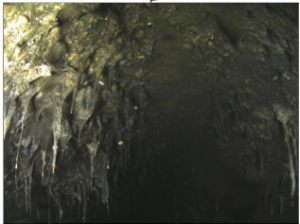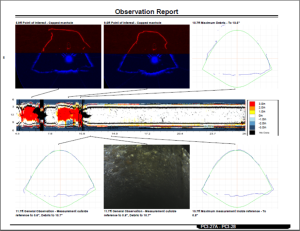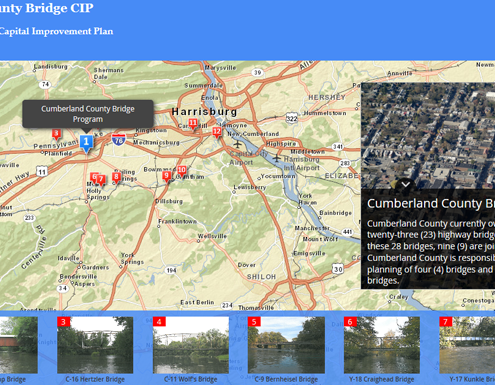Posts
5 Reasons You Should Consider a Roadway Pavement Management Program
/in Insights-Local Government, Insights-Municipal, Insights-Transportation, Uncategorized /by Judy LincolnCapital Improvement Planning Helps Londonderry Township Improve Bridge Conditions At Lower Cost
/in Insights-Municipal, Insights-Planning, Insights-Transportation /by Judy Lincoln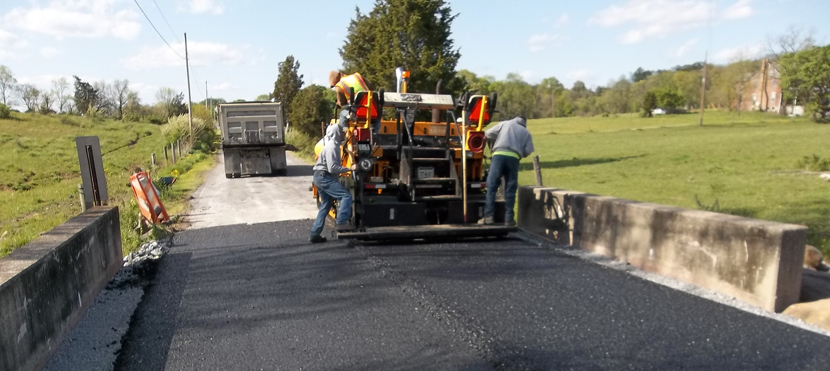
We regularly hear about the condition of infrastructure in the United States, and many times the news is bad. Too often we hear about underground pipes breaking, roads crumbling, and bridges that need to be closed. Fortunately, in Londonderry Township, bridge conditions are actually pretty good.
Londonderry Township is specifically responsible for 13 bridges, all of which cross waterways and are less than 20’ in length. Closing any one of these bridges for safety concerns could cause a significant disruption to emergency access and general traffic flow. To avoid this, Londonderry Township asked HRG to assess all 13 structures and prioritize their maintenance and replacement needs. Our evaluation indicated that all 13 bridges were likely more than 50 years old, and six of them should be replaced within the next 3 – 10 years.
HRG worked with the township to create an approach to address this pressing infrastructure need without overburdening the township’s annual budget. The initial concept was to replace one bridge every other year for the six most critical structures. This would allow us to address the township’s most urgent needs without being forced into an emergency situation. It would also allow us to identify alternative funding for each bridge replacement and carefully plan any necessary road closures to minimize traffic interruption.
Londonderry’s program is a perfect example of infrastructure asset management and capital improvement planning. HRG has written extensively about the benefits of asset management and capital improvement planning. Essentially, a proactive approach to identifying infrastructure needs, prioritizing those needs, and planning for the necessary funding produces better infrastructure at a lower lifetime cost.
Thanks to this forward-looking approach, Londonderry Township is about to replace the last of the original six critical structures: a bridge on Swatara Creek Road. This project is funded through the partial use of a Dauphin County Local Share Gaming Grant.
Three bridges were replaced in 2016: one each on Beagle, Braeburn, and Hollendale Roads. The township bundled these bridges into one project and used extremely favorable funding from the Dauphin County Infrastructure Bank. The first two bridges were replaced in 2012. Only one – on Round Top Road, was planned, but a second bridge on Foxianna Road required replacement after flooding from Tropical Storm Lee undermined the bridge. Fortunately, because of the emergency nature of the bridge replacement, the township was able to use federal disaster relief funding.
With the replacement of the six most critical bridge structures complete, the township will be able to focus on regular maintenance of the remaining seven structures to extend their useful life as long as possible. A proactive approach to maintenance like this means better driving conditions for township drivers over a longer period of time. The bridges will last longer, and the need for replacement will be delayed. This will save the township hundreds of thousands of dollars over time. (See an illustration of how this works with actual budget dollars in our article Better Roads for Less Money with Asset Management.)
The upkeep of bridges can seem like a daunting and expensive task, but it’s actually fairly simple if communities take a proactive approach. Consistent inspections to identify deterioration, regular maintenance to avoid worsening problems, and advanced planning for eventual replacement all combine to simplify bridge upkeep and ensure it remains affordable.
When it does come time for Londonderry Township to replace one of its structures, they will use the same judicial approach to ensure the infrastructure needs of the township are met in an economical manner.
(A version of this article originally appeared in the Londonderry Township newsletter.)
 Andrew Kenworthy, P.E., is the eastern region vice president of HRG. He has more than 25 years of experience in municipal engineering and land development/site design.
Andrew Kenworthy, P.E., is the eastern region vice president of HRG. He has more than 25 years of experience in municipal engineering and land development/site design.
Could infrastructure asset management improve your municipal bond performance?
/in Insights-Financial, Insights-Local Government, Insights-Municipal /by Judy Lincoln
If you’re a frequent reader of our newsletter and postings, you know we believe strongly in the benefits of infrastructure asset management. (This is a sampling of our prior articles about infrastructure asset management.) By regularly assessing the condition of your infrastructure and proactively planning its maintenance and replacement, you can reap many benefits. Most importantly, you will increase the useful life of your infrastructure for a lower long-term cost than the typical reactive approach many governments and authorities take.
A recent article in Governing magazine gives another good reason why investing in asset management can be beneficial: it just might lower your cost of borrowing through bonds. In this article, Justin Marlowe discusses the benefit of using the modified approach for calculating the value of infrastructure required in annual GASB reports. Under GASB standards, governments can either subtract a standard portion of their infrastructure’s value each year to account for depreciation (the traditional approach), or they can regularly assess the condition of the infrastructure, invest in maintenance to keep it in good condition, and then report the amount of money they have invested in maintenance (the modified approach). Using the modified approach, the assets don’t have to depreciate in value like they would in the traditional approach.
Marlowe cites research he’s conducted that shows investors appear to prefer trading bonds from governments that use the modified approach:
“Governments that use the modified method trade at much narrower price ranges compared to bonds from governments that depreciate. In other words, when a government uses the modified approach, investors are much more likely to agree on how to price its bonds. For governments, this can ultimately translate into lower bond interest rates.”
(excerpted from “Selling Your Sewer’s Story – Financial statements can make the best case for public works investors”)
He goes on to state that very few governments at the state and local level actually use the modified approach, so with a lower supply, the demand for such investments would likely be stronger yet.
The truth is, you’re going to have to invest in maintenance and repair anyway. At HRG, we believe that, if you invest in an asset management program, you can take a proactive approach to determining what maintenance is needed and then plan and budget for it in advance. This means you can target your maintenance dollars where they’re needed most and make sure you have the funds available to do the work before infrastructure failure brings even greater costs to bear on your budget.
Justin Marlowe’s study adds a bonus benefit to this type of approach: you can cite those proactive investments in your financial statements to make your government bonds a more attractive investment to traders.
Every client need is different, and HRG would be happy to discuss asset management planning, capital improvement planning, budgeting and/or rate making options to fit the unique needs of your community. Contact us to discuss your community’s infrastructure and financial goals today: (717) 564-1121!
 Adrienne Vicari, P.E., is the financial services practice area leader at Herbert, Rowland & Grubic, Inc., a civil engineering firm that serves local governments and authorities in Pennsylvania, Ohio, and West Virginia. Ms. Vicari has assisted numerous municipalities and water and sewer authorities with the creation of asset management programs that have created increased value and lowered costs for her clients.
Adrienne Vicari, P.E., is the financial services practice area leader at Herbert, Rowland & Grubic, Inc., a civil engineering firm that serves local governments and authorities in Pennsylvania, Ohio, and West Virginia. Ms. Vicari has assisted numerous municipalities and water and sewer authorities with the creation of asset management programs that have created increased value and lowered costs for her clients.
Benefits of Utility Asset Management
/in Insights-Financial, Insights-Local Government, Insights-Municipal, Insights-Water & Wastewater, Uncategorized /by Judy LincolnAs our water systems continue to age past their useful life and utilities face increasing budget pressures, the terms asset management and capital improvement planning have become buzzwords in the industry. However, as utility managers struggle to squeeze as much out of their budgets as possible, it is hard for many of them to justify the additional expense associated with developing and implementing an asset management program. Just like with any other purchase, they want to be sure the benefits outweigh the cost. So what are the benefits of asset management and capital improvement planning?

Target budget dollars where they’re needed most and eliminate wasteful spending.
An asset management and capital improvement program helps you identify exactly what maintenance and repair work is necessary without guesswork. Why allocate money toward cleaning out pipes selected at random, when you could target that money to the pipes that need it most (and use the savings to accomplish other system goals)? Why replace pipes simply because of age when they may be in perfectly good condition? Many factors besides age can cause the deterioration of infrastructure.
Photo by TheeErin. Published via a Creative Commons license.
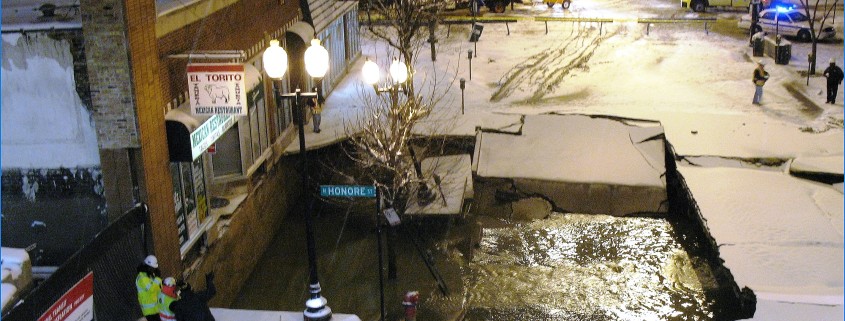
Minimize Risk
Knowing which infrastructure is most likely to fail (and correcting deficiencies before it does) can save you major expenses later in the form of property claims, water loss, etc. Knowing which failures would be the most catastrophic helps you target money toward their prevention as a first priority. With the budget limitations of municipal utility management, you might not be able to prevent every system failure, so it’s important to know which ones have the potential to cause the most financial damage and impact the most customers. This way, you can focus your efforts on preventing those first. If a failure does occur, a good asset management plan will include a proactive response plan, allowing you to respond quicker and more efficiently (thereby reducing damage and disruption).

Maximize Returns
Asset management and capital improvement planning is all about proactively investing in measures to extend the life of your infrastructure. These small investments can extend the life of an asset by several years. Over time, the money you save delaying replacement will far surpass the money you spent to maintain the asset, and your customers will have enjoyed better, more consistent service for this lower cost.

Promote Sustainability
Finding and detecting failures in the system like leaks can prevent water loss and the wasted energy consumed to treat water that never makes it to a customer.

Optimize Customer Service and Satisfaction
Proactively maintaining your assets ensures they function at peak performance for a longer period of time and are replaced before they fail. This means your customers receive top quality service without disruption and are happier for it. In addition, many asset management solutions include optional customer service applications that make it easier for customers to submit service requests and track them to completion.
Justify Your Rates
Rate increases are never popular with customers, but they are easier for them to accept when they are backed up with clear data showing exactly what improvements are needed and why.

Access grants and loans
Competition for funding is fierce, and government agencies are under pressure to make sure the money they invest is used wisely. As a result, they’re more likely to award funds to utilities who have clear documentation of the project need, its benefits, and a plan for getting it built, operating it, and maintaining it at optimum levels over time.

Know your worth
Many utilities have been considering the option of leasing or selling their assets as a response to growing financial obligations in the public sector. A comprehensive asset management system provides documentation of the value of your assets, so you can ensure you are in a position to negotiate the best possible deal for you and your customers. Potential investors will be more comfortable making a significant investment if they fully understand the value and the risks they’re assuming. (For more Insight into the utility leasing trend, see our article on calculating fair annual rental value.)
Every manager must take careful stock of his revenue and his expenses, but not all expenses are created alike. There is a difference between a cost and an investment, and asset management is clearly an investment in your utility’s future. In essence, it helps you provide better service at a lower cost with reduced risk and improved financing options. How many investments can you make that provide that kind of return?
Utility Asset Management: Maximizing ROI
/in Insights-Municipal, Insights-Water & Wastewater /by Judy Lincoln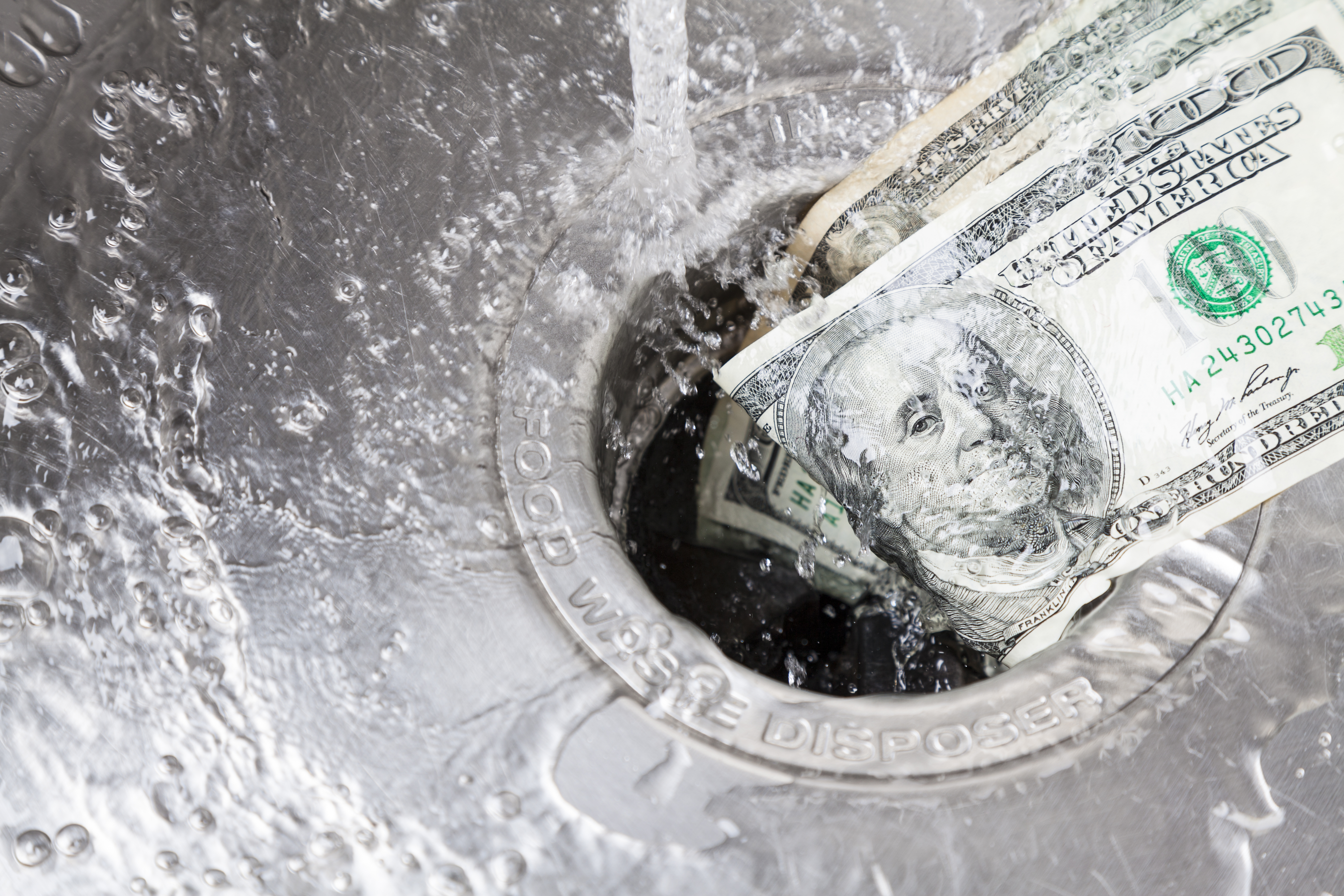
Each year, water and wastewater utilities send uncalculated dollars down the drain because of leaks and system failures, but asset management could provide the savings they need to respond to the creeping threats of aging infrastructure, water shortages, and increasingly stringent regulations.
Last year, UCLA filed a lawsuit against the Los Angeles Department of Water and Power for $13 million in damages sustained during a water main break on campus in 2014. This break released 20 million gallons of water onto Sunset Boulevard, flooding the street, campus buildings, and athletic facilities.
The lawsuit is just one of many claims the utility has received from people and businesses impacted by the water main failure; and it’s a reminder of the often hidden and forgotten costs utilities face when their infrastructure fails.
Every day, U.S. utilities produce 34 billion gallons of water, and 22% of it is lost through leaks. That’s billions of dollars in treatment, energy, labor and operations costs that cannot be recouped. These leaks cost the average utility more than $100,000 per year in revenue, but water main breaks like the one at UCLA can be even more costly.
Each year, there are approximately 240,000 water main breaks in the U.S., costing utilities an average $500,000 per break.
Much of our water and wastewater infrastructure is old and has far exceeded its life expectancy. Some pipes date back to the Civil War era! The cost to replace this infrastructure will be high, but, as these examples demonstrate, so is the cost of doing nothing.
As utilities struggle to budget for the replacement of aging systems, they continue to face increasing cost pressures from federal mandates. While the EPA establishes new limits on different contaminants (often requiring utilities to acquire new technology or improve their facilities), funding has not kept pace with these new demands. A report by the Water Infrastructure Network indicates that federal funding on water and wastewater systems has declined by more than 70% since 1980. As a result, local utilities have had to shift more of their revenue from operations and maintenance to new capital expenditures, leaving them even more ill-equipped to respond to an aging system.
At the same time, conservation efforts and improved technology have led many Americans to reduce their water consumption. While this is great for the environment, it translates into lower revenues for utilities – even as water acquisition costs increase (because utilities must turn to more expensive water sources once the least costly sources run dry).
With rising costs and shrinking revenues, utilities need to carefully manage every dollar to ensure the maximum return on their investment. The American Society of Civil Engineers estimates that the cost to make the improvements our water and wastewater system needs to keep functioning over the long term is more than $1 trillion. While there is plenty of work to be done, there is simply not enough funding to do it all at once. Therefore, ASCE recommends assessing the condition of every pipe and valve to determine the risks of failure and properly allocate funds where they are needed most. The need for asset management and capital improvement planning in the water utility industry has never been greater.
What is asset management?
Asset management is a systematic approach to minimizing the cost of owning, operating, and maintaining your infrastructure at acceptable levels of service.
It is not a computer system or GIS, though these are often valuable tools employed in an asset management program for record-keeping and data analysis. Depending on the needs of your utility, an effective asset management system could be as simple as an Excel spreadsheet or as robust as an enterprise level solution integrating all of your inventory, operations and maintenance, billing, and document management functions. The solution can include mobile interfaces for supporting field crews and even interactive applications to enhance and promote public interaction and transparency.
While utility managers often reject implementing a large-scale asset management program because they think it will cost too much, the truth is: asset management is an investment designed to cut inefficient or wasteful spending and stretch your budget further.
It is about optimizing how you spend your budget dollars in order to make sure they are providing the largest possible return on investment: reducing the life cycle costs of each asset you own while maximizing the service that asset provides over time.
A proper asset management and capital improvement program will help a utility identify areas where money is not being spent wisely and reallocate those funds where they can be most beneficial.
It will also help you recognize and evaluate options for keeping your assets functioning for a longer period of time, so that you don’t need to invest in expensive upgrades or replacements as frequently.
An asset management program involves:
Creating an inventory of what you have and its condition
Establishing your goals.
Prioritizing what’s most critical and directing resources to those needs first.
Measuring the results.
Analyzing those results and repeating or revising the cycle.
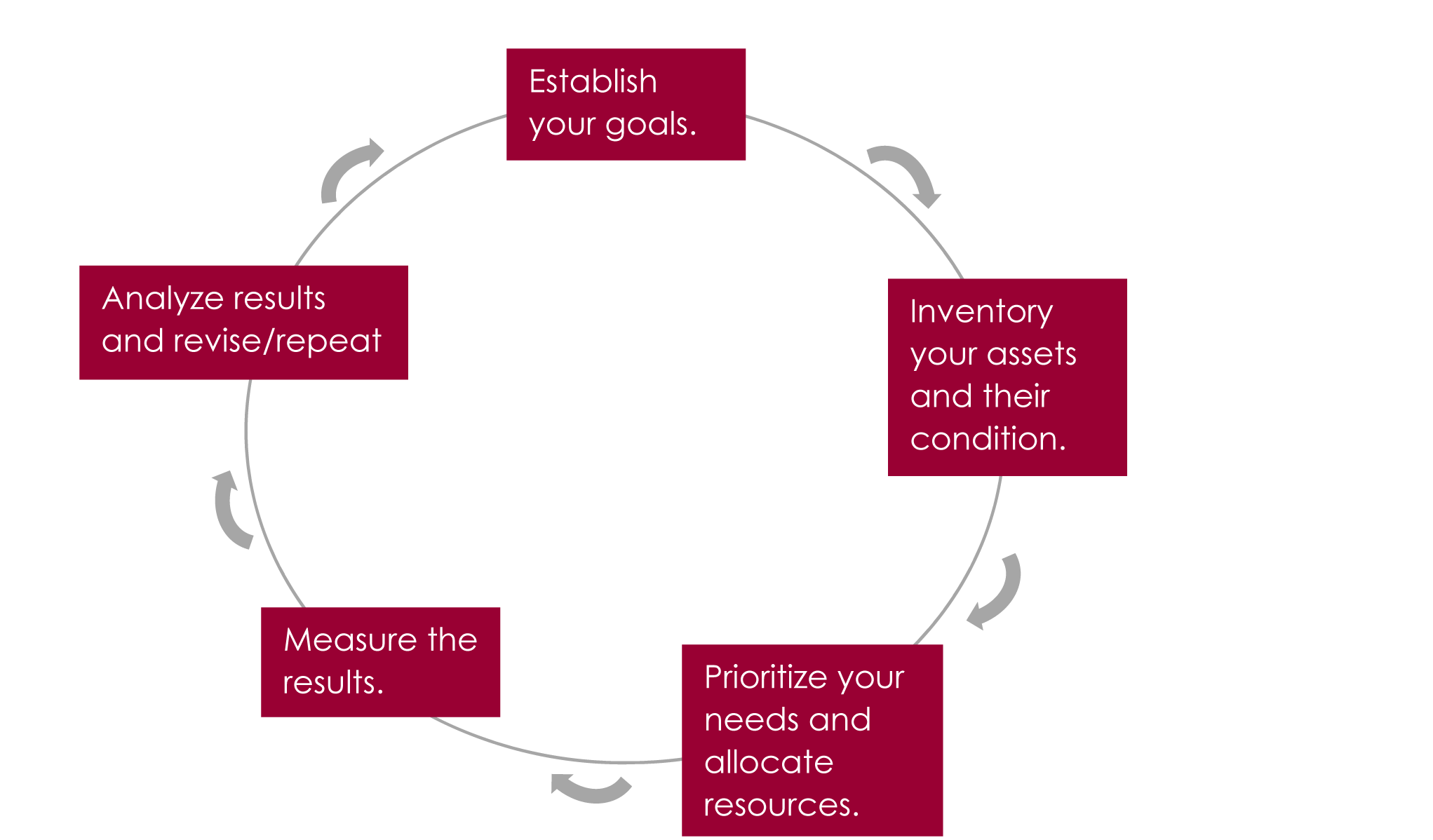
It is a circular process that never ends. Many things change over time: the condition of your assets, regulations and the business climate you operate in, the number of users you serve, etc. A good asset management and capital improvement program helps you plan for these changes in advance and respond proactively before they become threats to your bottom line.
Because of the tight financial constraints under which most utilities operate, they often take a reactive approach to budgeting for maintenance and replacements. As an asset fails, they make room in the budget to fix it or replace it, but this reactive approach will not be sustainable over the long-term. Our infrastructure is too old, and too much work will be needed to be able to pay for it all at once. Utilities need to plan for this inevitable future now, so that they can begin saving the money they will need in the coming decades.
Photo by Connie Ma. Published here under a Creative Commons license.
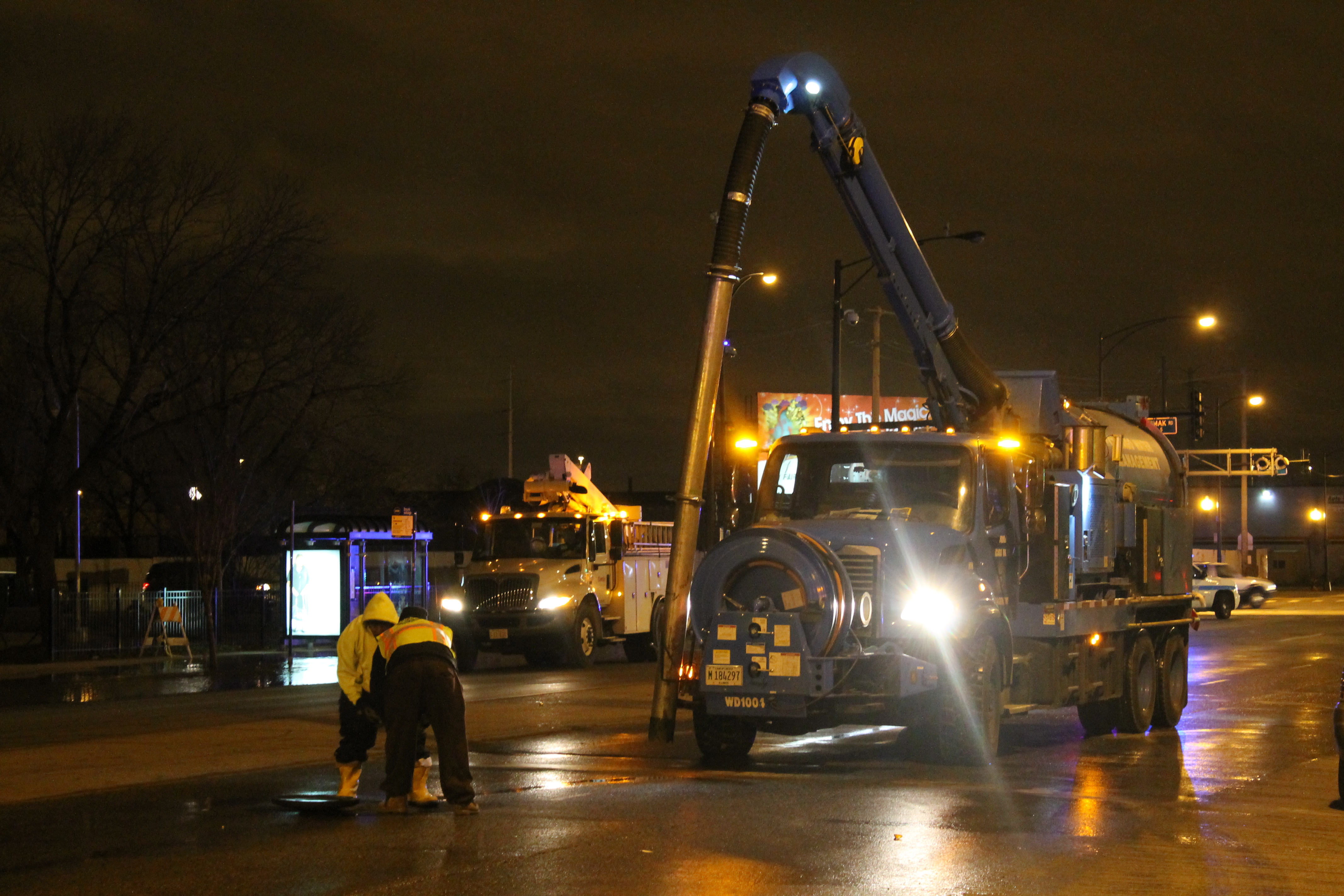
Proactive approach vs. Reactive: By monitoring the condition of your assets and planning for their maintenance and replacement in advance, you avoid the high costs associated with failures like this middle-of-the-night water main break.
Though the financial obligations associated with aging infrastructure, increasingly stringent regulation, and shrinking grant programs can seem overwhelming, asset management and capital improvement planning can help. Asset management helps you find the waste in your spending programs and put those dollars to better use. It helps you recognize potential threats to your system and minimize risk (thereby minimizing the financial damage those threats can do). It also helps you improve service to your customers and achieve buy-in from them when the case must be made for rate increases.
Investing in asset management and capital improvement planning can be hard to justify when utility budgets are stretched so thin, but the savings an asset management program can produce will more than pay for the program over time. Those savings, in fact, may be crucial to meeting the coming challenge of replacing our aging water systems and addressing the possibility of spreading water shortages.
In business, there’s an old saying: Sometimes you have to spend money to make money. With asset management, you spend money to save money.
HRG has extensive experience in asset management for municipal clients, particularly in the areas of sanitary and storm sewer systems. Read more about our asset management experience.
Assessing the Condition of Large Sewers
/in Insights-Water & Wastewater, Uncategorized /by Judy Lincoln Determining the condition of large sewers can be challenging, but multiple tools are available to help. This article, which was published in the October 2015 issue of Keystone Water Quality Manager magazine, provides a brief review of large sewer condition assessment tools and gives some guidance in deciding which to use.
Determining the condition of large sewers can be challenging, but multiple tools are available to help. This article, which was published in the October 2015 issue of Keystone Water Quality Manager magazine, provides a brief review of large sewer condition assessment tools and gives some guidance in deciding which to use.
Knowing the condition of your sewer system now can save you major headaches (and money) down the line. The investment you make today in conducting regular inspections of your pipes and pump stations will help you avoid emergencies like burst pipes and sewer overflows tomorrow, but it will also help you make better decisions about where to allocate limited revenues in terms of maintenance, repairs, and replacements.
Even though the investment in a condition assessment is worthwhile, you want to make sure you spend those assessment dollars wisely and get the data you need in the best possible quality for the lowest possible cost. Many tools are available, and each one is suited to particular needs. Which tool is right for your system? Let’s take a look at the strengths and limitations of some of the most popular methods of sewer inspection available today.
Knowing What Each Tool Can Do
1. Zoom Camera
A handheld or truck-mounted zoom camera is a great tool for quickly assessing the condition of large sewers. A zoom camera enables you to see for several hundred feet down the sewer line, but the view is limited by any obstruction to line of sight (such as grease, cobwebs, debris or a deflection in the sewer). In addition, the camera will only allow you to see above the water level.
2. Acoustic Assessment
Another quick assessment method is the use of acoustics. The ability for sound to pass through the sewer provides an indication of whether a blockage exists or not. However, it is not a complete assessment and will require some additional inspection work. Still, an acoustic assessment can cost about a quarter of the price of basic closed circuit television, so it can be used to save money by focusing more expensive data collection methods only on areas the acoustic assessment has identified to have potential blockages (as opposed to using a more expensive, but more thorough tool throughout the entire system).
3. Closed Circuit Television (CCTV)
CCTV has been used for many years to evaluate sewers, and it can be customized to the needs of your unique system because of the different types of cameras and vehicles that are available. A conventional pan and tilt camera may be sufficient for some pipes, but a fish-eye type camera lens can be used for a virtual pan and tilt that is somewhat more comprehensive.
CCTV provides a visual assessment of the sewer, but it can also be helpful in identifying buried manholes or revealing other unknowns in the connectivity of the sewer system.
In the past, it was a challenge to obtain sufficient lighting to get a clear picture of large sewers (see figure on the right), but new technology solves this problem by using a strobe light and stitching a series of images together, rather than recording continuous video.
4. Sonar
While some tools like the zoom camera cannot provide data on the condition of pipes below the water surface, sonar can. Therefore, it is useful for identifying debris and sensing connections below water level. However, some water must be in the sewer for the use of sonar to be possible.
5. Laser Profiling
Laser profiling can reveal buried manholes or other connections to the sewer that may not have been realized and can also be used to assess pipe wall loss (as long as the original sewer size information is available and can be entered into the software). However, like the zoom camera, laser profiling can only be used to see above the water level. Therefore, it’s wise to combine it with sonar and CCTV in order to get a complete assessment of the sewer condition, as seen in the figure on the right. (The red shows results from the laser, while the blue shows results from sonar.) For a recent project involving 70,000 feet of sewer, the cost to use these three tools together was approximately $5-6 per foot.
6. LIDAR (3D Laser)
LIDAR is an advanced technology alternative to standard visual and photographic inspection methods. It uses 3D optical scanners to collect simultaneous data and images, which can be used to produce a 3D model of the sewer. This model can then be used to measure, identify deficiencies, and make recommendations for rehabilitation or replacement. It can also be used in 3D infrastructure system modeling and management applications when combined with equally accurate pipe and structure positional data. One instance 3D data is especially useful is in manufacturing the lining for a bend in a sewer.
As an advanced technology, LIDAR provides more comprehensive data than a zoom camera or CCTV inspection could. As an added bonus, the optical scanners are typically inserted into the sewer from the surface, eliminating the need for a person to enter the confined space of the sewer and the associated dangers they could encounter.
7. H2S Gas Sensor
An H2S Gas Sensor is helpful in cases where there is concern about corrosion. The sensor can be mounted on a multi-sensor platform to provide additional insight into the state of the sewer.
8. Gyroscopic mapping
Gyroscopic mapping is used to obtain X-Y-Z coordinates of the sewer along its length, so it’s helpful for identifying the location of bends or changes in elevation. However, this tool requires known X-Y-Z coordinates at the starting and ending points of a sewer.
For large sewers, a small pipe needs to be pulled through the large pipe as a host for the probe, leading to some limitations in the information gained. However, this tool can be useful for facilities such as force mains where changes in direction are often not seen from the surface.
9. In-pipe Ground Penetrating Radar (GPR)
GPR inside the pipe gives insight beyond the sewer itself. It can reveal void spaces outside the sewer line, such as may be caused by infiltration. It can also shed light on the thickness of concrete covering rebar in the sewer.
Deciding Which Tool is Right for You
With a clearer picture of what each tool can and cannot do, you’re better prepared to decide which one will produce the best results for your system. In doing so, here are some things you should consider:
1. Understand your goals.
Consider what you want to gain from the assessment. For example:
If you know the sewer segment has concerns and has bends in it, then 3D LIDAR may be desirable as a means of mapping the sewer.
If blockages are your concern, acoustic rapid assessment may be a good starting point to help narrow the focus on runs where you want to perform further evaluation.
If you have seen evidence of corrosion in manholes and have a concrete pipe, an H2S sensor may be in order.
If you want information on the whole pipe and cannot bypass the flows, you will need to supplement a technology like CCTV with sonar in order to see below the water surface.
When defining your goals, be sure to solicit the input of all levels of staff and the ways they can benefit from the data.
2. Consider combining technologies to address different needs.
Each tool described here has strengths and limitations, so no technology is perfect for all conditions. Laser profiling and sonar can be combined to get thorough data above and below the water surface. An acoustic assessment can be used as a preliminary method in order to identify any blocked pipes that require more detailed assessments. An H2S gas sensor may be needed for pipes that may have corrosion, but you may have pipes of varying material throughout your system and may not need to pay for this technology everywhere. By working with a knowledgeable consultant, you can customize a plan using several different technologies only where they are needed in order to maximize the use of your budget resources.
3. Recognize that special equipment availability may affect your schedule.
Specialized equipment is not as readily available as basic equipment, so, if quick turnaround is necessary, you may want to plan your schedule around any specialty equipment needs.
4. Understand the sewer material being investigated.
If the sewer is concrete, corrosion is a real concern, so an H2S gas sensor or laser profiling may be needed. (This is not the case if the sewer is vitrified clay.)
5. Consider the ground surface.
Is there evidence of settlement on the surface near sewer lines? If so, perhaps in-pipe GPR should be considered to look for voids that have developed around the sewer.
6. Recognize your flows.
Some of the tools described here have specific water flow requirements. For example, CCTV and laser profiling require head space above the water to be effective, but sonar needs a certain depth of water over the bottom of the sewer (as well as any debris present) in order to be successful. Therefore, you will need to coordinate with appropriate staff to implement a means of controlling the flow of water through these lines.
Water flow also impacts the types of vehicles used to carry the various tools through the sewer. Depending on your flows, a crawler may work well, or a float platform may be more suitable. Wheels can be put on float platforms, so additional space is needed for clearance.
7. Plan for the unexpected.
As much as you try to consider every goal and every possible need, each job involves surprises. (If you knew exactly what you’d find in the pipes, you wouldn’t need an inspection, after all, would you?)
That’s why you should design a plan that is flexible for changing circumstances and build extra time into your schedule. Decide ahead of time what will be done if a buried manhole or substantial debris is found: Will you uncover the manhole now? Will you clean the debris out right away or just note it in the report?
The vehicles carrying the inspection tools can often travel thousands of feet if there are no drops or other concerns, so you may not need to access every single manhole during a condition assessment. However, you should still have a method in place for identifying each manhole in case needs change. (Also, individually identifying each manhole – even those not uncovered for access – is essential for logging the findings of your assessment in a report.)
Develop IDs for every manhole – even those you don’t plan to access — prior to inspection and have a plan for how to ID structures if one is found during the investigation. This can reduce confusion and make post-processing more efficient.
A thorough assessment of the condition of your sewers is crucial to optimizing system performance, determining maintenance and repair needs, and budgeting for the eventual replacement of aging infrastructure. It can also help you discover problems before they result in a system failure or reduced service to your customers. While inspections can cost thousands of dollars, they can save you thousands more if they prevent a sewer main backup or break (and the associated costs to repair the sewer and other infrastructure the break may have damaged). They also help you better target your cleaning and maintenance efforts to where the work is needed most.
In determining which technology to use for a condition assessment, you need to consider the materials of your pipes and the volume of flows through them, the goals you plan to accomplish, and your timeline for completing the work. Some tools like a zoom camera or acoustic assessment provide quick data but may need to be supplemented with other methods if blockages are found or more detail is needed. Other tools like laser profiling and CCTV will only provide data on the condition of pipes above the water line, so additional technologies like sonar will be needed to assess the pipes below water level. Some technologies like 3D LIDAR and gyroscopic mapping provide a high level of detail that may be necessary for certain specialized cases.
The figures above illustrate some meaningful findings from a condition assessment. The “shape” of the pipe resulting from sonar and laser profiling is compared with the design shape of the pipe in the figure on the left, indicating helpful information such as debris and uncovered manholes (the red spots). The quantity and distribution of debris as shown in the figure on the right will help in developing bidding documents for a cleaning project and getting better prices.
In order to provide the best possible data at an optimized price, it is wise to seek the counsel of an experienced professional who can customize a plan that uses several different technologies based on the varying conditions throughout your system.
With the right tools, you can ensure you get the data needed to keep your system functioning at optimum levels for all your customers for several years to come.
 Matthew Cichy, P.E. is a water and wastewater senior project manager responsible for a variety of engineering tasks, including water and wastewater facilities planning, the design of water distribution systems, wastewater collection and conveyance systems, pumping stations, and water and wastewater treatment plants as well as construction administration, field inspections, financial consulting, and project management.
Matthew Cichy, P.E. is a water and wastewater senior project manager responsible for a variety of engineering tasks, including water and wastewater facilities planning, the design of water distribution systems, wastewater collection and conveyance systems, pumping stations, and water and wastewater treatment plants as well as construction administration, field inspections, financial consulting, and project management.
 Bruce Hulshizer, P.E. is also a project manager in HRG’s water and wastewater service group. He has two decades of experience in civil engineering and is an active member of the Pennsylvania Water Environment Association, where he serves as their co-chair of the Collection System Committee for 2015.
Bruce Hulshizer, P.E. is also a project manager in HRG’s water and wastewater service group. He has two decades of experience in civil engineering and is an active member of the Pennsylvania Water Environment Association, where he serves as their co-chair of the Collection System Committee for 2015.
Overcoming Concerns About Forming a Stormwater Authority
/in Insights-Municipal, Insights-Water Resources, Temp - Ad Landing Page /by Judy LincolnAct 68 gave municipal authorities the ability to finance, own, operate and lease stormwater facilities, but, two years later, many municipalities still have questions about whether an authority is right for their community. Aging infrastructure and increasing regulatory obligations from the state and federal government have put a heavy burden on towns across Pennsylvania, and they are searching for ways to finance stormwater management beyond general tax revenue. However, concerns about the upfront investment creating an authority would require and the possible backlash from members of the community give them pause.
Every municipality’s financial situation and stormwater needs are different, so it’s wise to seek the counsel of a consultant with dual expertise in engineering and financial consulting to design a custom solution tailored to those unique needs. If forming a stormwater utility is indeed a good fit for your community, your consultant can help you overcome the typical concerns through a strategic approach built upon sound financial and engineering principles.
Concern #1: The community will be against new fees for stormwater.
It is true that residents, business owners, and non-profit organizations will initially question the need for another bill; no one likes paying new fees. However, municipalities can win public support with extensive community involvement and educational outreach. It’s important to communicate that the new fee will be used exclusively for stormwater management and will not be “raided” for other purposes. It’s also important to show the community exactly how their money will be invested: list the specific improvements you intend to make and use photographs and illustrations whenever possible. Emphasize the fairness of the fee: that everyone pays for the services they use based on the stormwater they contribute to the system (and not simply the value of their property). Accentuate the positive by naming the fee after the benefits it provides to the community (such as a “Clean Water Management Fee”), as opposed to the problems it addresses. Invoice the fee separate from taxes, similar to water and wastewater billing.
Concern #2: It will cost too much to get the authority up and running.
Most municipal budgets are stretched to their limit as it is, so investing money in the start-up costs associated with a new authority is a hard sell when that money could be used for maintenance and repair of ailing infrastructure. But, even though the results are not physically tangible like new culverts or pipe repairs, the money you spend on a new stormwater authority is a true investment in your community’s future. The authority will cost money to get up and running, but it will create revenue in the future that can be used to proactively address stormwater needs before they become costly emergencies. What’s more, that dedicated revenue stream makes you eligible for grants and low-interest loan programs that otherwise would’ve been out of reach because of the need for matching funds.
Speaking of funding, some programs will help defray the start-up costs associated with organizing an authority. For example, West Goshen Township, Chester County, has entered into a 50/50 cost-share with the Army Corps of Engineers for technical assistance with mapping and inventory of their stormwater infrastructure. This step is necessary to develop the Stormwater Management Program and ultimately determine the revenue requirements necessary to establish and justify the stormwater rate.
Depending upon whether the municipality sells its stormwater assets to the authority or leases them, the municipality can also receive an upfront or annual payment from the authority for the transfer of facilities, which will help to absorb some of the start-up costs, as well.
However, municipalities may be able to avoid a lot of the start-up costs associated with an authority by simply adding stormwater to the charter for their existing water or wastewater utility. If they do, the structure and administrative functions (the board, billing, etc.) will already have been set up; the articles of incorporation will just need to be amended.
Concern #3: We don’t want to give away authority over our stormwater infrastructure, especially considering the liabilities we have from our MS4 permit.
Though the municipality can appoint people to its board, ultimately, the authority is an independent body that makes its own decisions. Yet currently the municipality – not the authority – is responsible for any fines incurred from not complying with MS4 permit requirements. This arrangement can easily seem dangerous to many municipal officials, but solutions are available.
A knowledgeable financial consultant can assist in structuring the authority in many different ways to give the municipality flexibility in deciding which powers and purposes it wishes to assign. One option is to set up an operating authority and pair it with a management and services agreement. Under this arrangement, the municipality transfers its facilities to the authority, who collects a rate and charges from local users to finance their operation, maintenance and improvements. The authority then “hires” the municipality to conduct operations and maintenance and perform administrative functions such as billing.
Another option is the reverse leaseback authority. Under this arrangement the municipality continues to own the facilities and finance capital improvements, but it leases the system to the authority for operation, maintenance and the setting of rates and charges.
Hybrid versions of these examples can also be established based upon the priorities and goals of the municipality.
In addition, PA DEP is currently working through amendments to its program which may allow municipalities to transfer their MS4 permits to a stormwater authority along with the drainage and stormwater facilities. By transferring the permit, the municipality would also transfer the legal obligations and liabilities that go with it.
As you can see, the concerns that municipalities have about stormwater authorities can be alleviated through joint financial and engineering planning. Though municipalities typically think of their stormwater infrastructure as an issue for their civil engineer, municipal authorities are primarily financial organizations, so a thorough understanding of finance is important to ensure financial and legal obligations are met in the most advantageous way to the municipality as possible. With fears allayed, municipalities are then able to see the many advantages a stormwater authority offers. In our next post, we discuss these advantages of forming a stormwater authority.
 Adrienne Vicari, P.E., is the financial services practice area leader at HRG. In this role, she has helped the firm provide strategic financial planning and grant administration services to numerous municipal and municipal authority clients. She is also serving as project manager for several projects involving the creation of stormwater authorities or the addition of stormwater to the charter of existing authorities throughout Pennsylvania. Contact Adrienne about stormwater authorities.
Adrienne Vicari, P.E., is the financial services practice area leader at HRG. In this role, she has helped the firm provide strategic financial planning and grant administration services to numerous municipal and municipal authority clients. She is also serving as project manager for several projects involving the creation of stormwater authorities or the addition of stormwater to the charter of existing authorities throughout Pennsylvania. Contact Adrienne about stormwater authorities.
Better Roads for Less Money with Asset Management
/in Insights-Local Government, Insights-Municipal, Insights-Transportation /by Judy Lincoln
Municipal managers are under pressure every day to deliver more services in spite of shrinking budgets. With only so much money available, they must make tough choices about what investments to make in their community. Though they’ve heard the benefits of asset management many times in recent years, they still don’t feel they have the money to invest in such programs – not when that money could be spent on the construction or repair of badly needed roadways, bridges, and pipes.
Many communities see asset management programs as an additional expense, but the truth is: asset management saves you more money than it costs.
See also: Position Yourself for Funding With Asset Management & Capital Improvement Planning
Imagine a tale of two cities: both celebrating the ribbon-cutting on a brand new roadway and each taking a very different approach to caring for it.
City #1 has no asset management or capital improvement planning program. It does not assess the condition of its roadways and plan long-term investments in their upkeep. It makes repairs when the need becomes obvious.
City #1 will make moderate investments in maintenance over the next 20 years, but the condition of the roadway will steadily decline. Ten years after the ribbon-cutting celebration, the roadway condition will be fair at best. Fifteen years after, the residents who heralded its construction will be grumbling about its potholes and cracks. Twenty years after, the condition of the road will be so poor that City #1 will need to completely replace the roadway at a cost of $1.2 million per lane mile.
City #2, on the other hand, has a robust asset management and capital improvement planning program. It routinely inspects the condition of its roadways and takes proactive action to keep those roadways in top form. With investments every five years of approximately $100,000 to resurface the pavement, City #2 maintains its roadway in good condition throughout the next two decades, keeping traffic flowing smoothly, encouraging growth and development, and making residents and local businesses happy. The condition of the roadway never declines to a state where travelers complain.
Over the same 20-year-period, the residents of City #2 will ultimately have paid less money ($400,000) than City #1 ($1.2 million) but will have enjoyed better roadway conditions over the long-term.
Still think you can’t afford to invest in asset management and capital improvement planning? As these two cities show, you can’t afford not to.
For more information about how asset management and capital improvement planning can benefit your community, contact Brian Emberg, P.E., our Senior Vice President and Director of Transportation Services.


